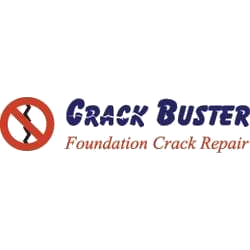FOUNDATION CRACKS: HOW WORRIED SHOULD I BE?
Found a crack in your basement? Take a deep breath. All poured concrete foundations develop vertical or diagonal cracks. These sorts of cracks are caused by the initial settling of the house in the first year after the foundation is poured, and over time may become more pronounced. While concrete has a great deal of tensile strength, it has very little elastic strength, so when the house settles unevenly, a crack is formed. VERTICAL CRACKS ARE NOT GENERALLY STRUCTURAL. Vertical cracks are really only a concern in terms of potential leakage.
Although it is true one’s house is not going to fall apart because of vertical cracking, potential leakage is obviously concerning enough, particularly if one wishes to utilize their basement as an additional living space. The first, and best thing one can due to prevent leakage is to maintain correct grading and drainage. The ground should be sloped down from the house and eaves troughs should be directed so that water drains well away from the house. Consult local guidelines for precise details.
Vertical cracks are, however, recommended for repair at the first sign of moisture. Look for efflorescence, a white, sort of chalky residue left behind on concrete basement walls by moisture, or drip stains, or staining of the bottom plate. Also, if one intends to finish the basement, it is recommended to repair all visible cracks, as per Murphy’s Law. Even if one has lived in their house many years without ever experiencing a leak in the basement, if cracks are covered in such a way as to make discovery or repair difficult, one may be inviting catastrophe.
There are many ways to approach concrete foundation crack repair, from inside and outside, but what is critical is that the crack is sealed on the outside. At Crack Buster, for example, we have devised a system whereby we perform the work from the inside, but in such a way so that we get a flexible, permanent seal to the outside.
HORIZONTAL CRACKS, on the other hand, are an entirely different beast altogether. Horizontal cracks are caused by lateral pressure being exerted against the wall. The crack will typically run most of the distance from the wall. If one places a meter stick against the wall and it is flush with the wall below the crack but not above it, deflection has occurred. The foundation has become structurally compromised at this point, and reinforcement is recommended. Be aware, this is a more costly repair than simply preventing leakage. An engineer or reputable contractor should be consulted.


